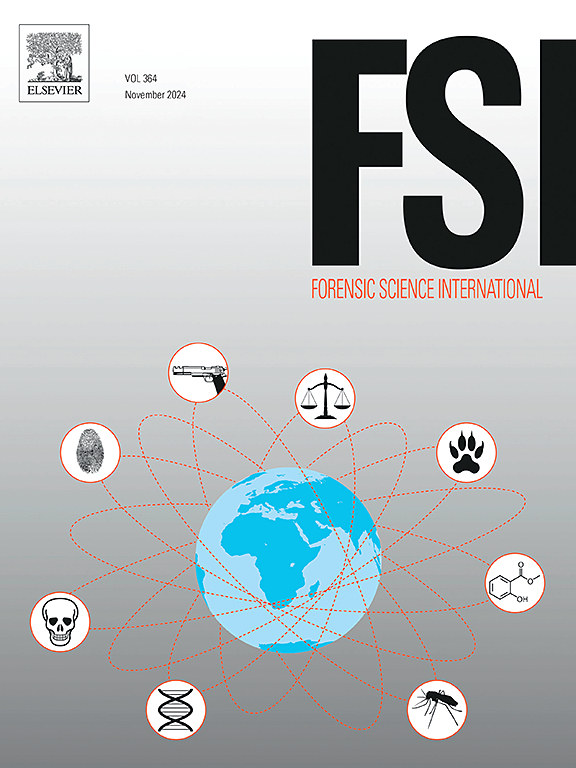Environmental DNA as a tool for detecting illegal wildlife trade
IF 2.5
3区 医学
Q1 MEDICINE, LEGAL
引用次数: 0
Abstract
The illegal wildlife trade presents significant challenges to wildlife conservation due to its large impact on population and species persistence. Forensic technology plays an important role in detecting and prosecuting such trade but has lagged human forensics where trace genetic evidence is important in conviction or exoneration. At present, most genetic applications in wildlife forensics focus on identification of taxa or populations via tissue samples or visible trace material (e.g., blood, hair or feathers). However, enforcement officials may encounter common household objects that are suspected to be used in capture, transport, or holding of wildlife, but without visible evidence of wildlife presence. Here, we demonstrate that environmental DNA (eDNA) techniques can be used to detect trace DNA from turtles on both plastic and fabric objects with high confidence for at least six months following only an hour of exposure. Sampling location and subsequent swabbing did not impact detection probability. While we observed very different DNA concentrations in the two substrate types, detection outcomes were relatively similar. The lack of substantial DNA decay during this experiment suggests a long window (potentially years) in which DNA may remain detectable to law enforcement officials under common gear storage conditions.
环境DNA作为检测非法野生动物贸易的工具
野生动物非法贸易对野生动物种群数量和物种持久性造成了巨大影响,给野生动物保护带来了重大挑战。法医技术在发现和起诉这类贸易方面发挥着重要作用,但在微量遗传证据对定罪或免罪很重要的人类法医方面却落后。目前,大多数野生动物法医的遗传应用集中在通过组织样本或可见痕迹材料(如血液、毛发或羽毛)鉴定分类群或种群。然而,执法人员可能会遇到怀疑用于捕获、运输或持有野生动物的普通家用物品,但没有野生动物存在的明显证据。在这里,我们证明了环境DNA (eDNA)技术可以用于检测塑料和织物物体上的海龟痕量DNA,并且在仅暴露一小时后至少六个月内具有高置信度。采样位置和随后的抽拭不影响检测概率。虽然我们在两种底物类型中观察到非常不同的DNA浓度,但检测结果相对相似。在这个实验中,缺乏实质性的DNA衰变表明,在一个很长的窗口(可能是几年),在普通的齿轮储存条件下,DNA可能仍然可以被执法人员检测到。
本文章由计算机程序翻译,如有差异,请以英文原文为准。
求助全文
约1分钟内获得全文
求助全文
来源期刊

Forensic science international
医学-医学:法
CiteScore
5.00
自引率
9.10%
发文量
285
审稿时长
49 days
期刊介绍:
Forensic Science International is the flagship journal in the prestigious Forensic Science International family, publishing the most innovative, cutting-edge, and influential contributions across the forensic sciences. Fields include: forensic pathology and histochemistry, chemistry, biochemistry and toxicology, biology, serology, odontology, psychiatry, anthropology, digital forensics, the physical sciences, firearms, and document examination, as well as investigations of value to public health in its broadest sense, and the important marginal area where science and medicine interact with the law.
The journal publishes:
Case Reports
Commentaries
Letters to the Editor
Original Research Papers (Regular Papers)
Rapid Communications
Review Articles
Technical Notes.
 求助内容:
求助内容: 应助结果提醒方式:
应助结果提醒方式:


